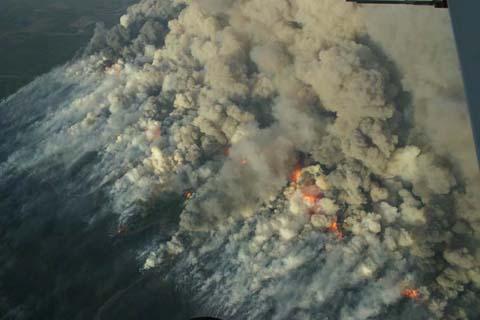Analyzing the ‘Spring Dip’ in Foliar Moisture Content and Its Relationship to Crown Fire Activity in the Great Lakes
Both firefighters and fire scientists have observed a period of peak crown fire activity in the Great Lakes area during spring when a dip in foliar moisture content occurs. For decades, the cause and timing of this ‘dip’ have been poorly understood. It is therefore important to understand the drivers of this dip in order to improve wildland firefighter preparedness and situational awareness during a period of dynamic fuel changes.
Working with local firefighters from south-central Wisconsin, FFS Research Ecologist W. Matt Jolly, in collaboration with the Wisconsin Department of Natural Resources, the Eastern Area Fire Science Consortium, and the University of Wisconsin-Stevens Point, developed a sampling scheme to determine the causes of spring moisture content changes and to determine their effect on flammability. Foliar samples were taken from red pine and jack pine throughout the 2013 growing season and needle moisture, chemistry, heat content, and flammability were determined in the laboratory. During that time, local firefighters documented fire behavior on wildland fires throughout the study area.
Results indicated that foliar chemistry, rather than absolute foliar water content itself, drove the apparent changes in measured live foliar moisture content. Results confirmed that the period of highest flammability occurred during the moisture content dip and was coincident with the timing of the most extreme fire behavior observed by local firefighters. Fire seasons in the Great Lakes occur rapidly after snowmelt and the timing of both snowmelt and this needle moisture dip can vary by more than a month from year to year. This information will help Great Lakes firefighters prepare for and respond to wildland fires.
Photo: Aerial view of the Germann Road Fire in northwestern Wisconsin, May 2013. This fire is typical of the high-intensity crown fires found in jack pine forests during the ‘spring dip’. Photo courtesy of Phil Miller, Pilot, Wisconsin Department of Natural Resources
